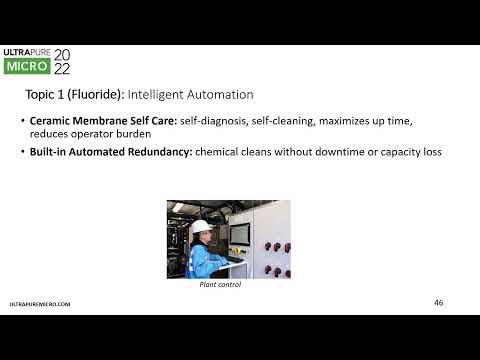Membrane protection through efficient dechlorination control with direct, accurate and automatic measurement of low-ppb chlorine residual
Date Published: 2022 | Conference materials
Log in or Join UltraFacility to access this content
To access our resources you will need to be a member of UltraFacility, log in to your account or purchase a membership to view this content.
Already have an account? Log in
Chlorine, a broadly available oxidizing disinfectant, is added to feedwater in many RO applications to a target residual concentration to prevent membrane fouling. Prolonged exposure of RO membranes to chlorine exceeding is detrimental to membrane integrity, while the absence of a disinfectant promotes biofouling and causes loss of recovery. To maintain this balance, RO membrane operators must accurately monitor residual concentration of oxidizing disinfectant in RO feedwater and manage addition of dechlorinating agents such as sodium bisulfite (SBS) or sodium metabisulfite (SMBS).


